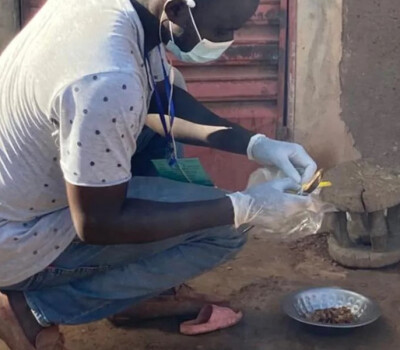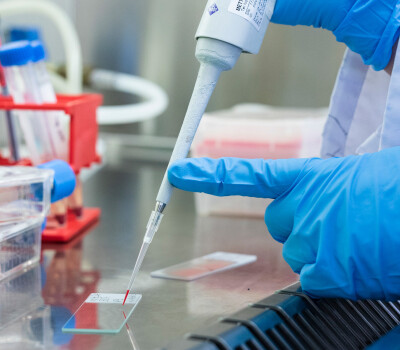Micro-dose technique used by ITM allows for 2.5 more vaccinations against monkeypox

Next week, phase two of the vaccination campaign against the monkeypox virus will start. From then on, more people will be eligible for vaccination, the vaccine stock will be replenished and more micro-doses will be available. This is because the vaccine can now also be administered intradermally, which means under the skin. ITM is one of only two Belgian clinics that has been using this technique routinely for years. Doctors and nurses from the institute will also train other clinics in this.
2.5 times more vaccinations
With intradermal vaccination, the vaccine is injected into the skin instead of the muscle. This technique is more economical and usually more effective, but it tends to cause side effects such as redness at the injection site. Because you only need one-fifth of the dose with this method, it is used in vaccine shortages in areas where rabies, yellow fever or polio occur. ‘Since we will administer this micro-dose at two different times, we can preventively vaccinate 2.5 more people at risk. This means we are making huge leaps forward compared to the first phase. Back then, only one dose was given, with a follow-up injection by the end of the year’, says Dr Patrick Soentjens, Head of the ITM travel clinic.
Long-standing expertise
In cooperation with the Ministry of Defence, ITM has built up years of expertise in this vaccination technique. Among other things, through clinical studies on vaccination schedules for rabies and tick-borne encephalitis (TBE). Since 2018, travellers have been able to go to ITM, as the only clinic in Belgium, for an intradermal preventive vaccination against rabies. The institute will now also pass on this expertise to HIV centres, so that they can make optimal use of their stock of monkeypox vaccines and help more people at risk.
ITM is soon planning a prospective study to evaluate the intradermal technique for the monkeypox vaccine in even more detail.
More questions? Read our monkeypox FAQ.
Spread the word! Share this story on









